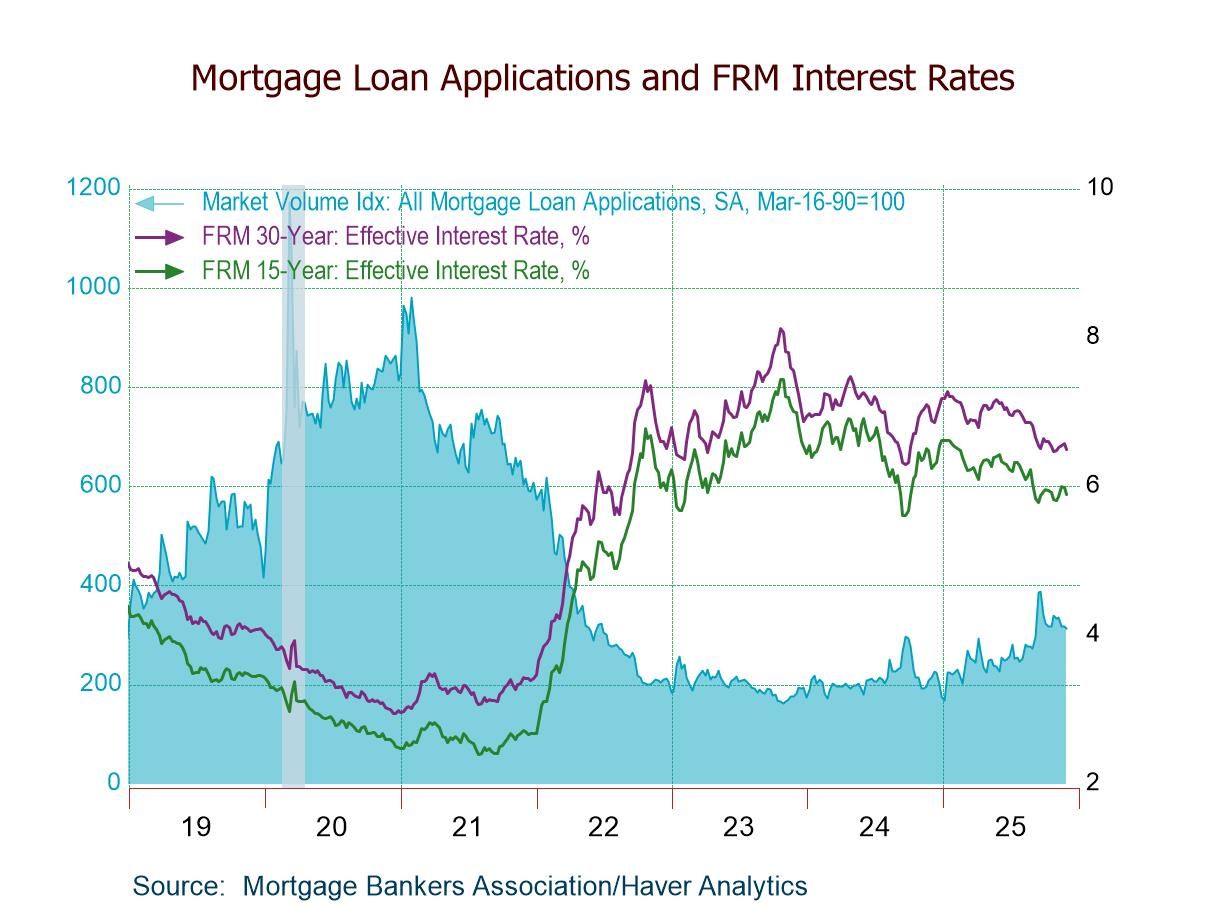 Global| Jan 21 2011
Global| Jan 21 2011INSEE's Industry Survey Points Up For France
Summary
France sails briskly though troubled euro-waters - INSEE's indicator for the French Industry rose briskly in January. Still, in broad terms the growth rate in the indicator is flattening out as the chart above demonstrates. Solid [...]
 France sails briskly though troubled euro-waters - INSEE's indicator for the French Industry rose briskly in
January. Still, in broad terms the growth rate in the indicator is flattening out as the chart above demonstrates.
France sails briskly though troubled euro-waters - INSEE's indicator for the French Industry rose briskly in
January. Still, in broad terms the growth rate in the indicator is flattening out as the chart above demonstrates.
Solid climate reading - The climate indicator stands in the 67th percentile of its range and better still lies in the 78th percentile of its ranked queue of values since 1990. With a mean of 100 its 108 reading in January is clearly above average. The Climate reading puts French industry on very solid ground.
Solid-to-strong industry trends - The recent trend is evaluated at a +10 reading the same as in December. That reading stands in the 71st percentile of its high-low range and at the 77th percentile in its ranked queue of values. These are firm-to-strong readings and again the reading is well over its average which is a -8. The reading for the likely trend is even stronger at +16 and that rose by three points over its December value. It compares to a mean reading of 6 and stands in the 79th percentile of its high-low range and in the 81st percentile of its ranked queue of values. All of these are high metrics. France's production and production expectations are on solid footing according to the survey.
Orders and demand are not as weak as the reading appears - Orders and Demand register a much weaker-sounding -8; still that is the biggest improvement on the month among these categories as the December reading was -17. The reading should be evaluated against an average valued at -17. As such it stands in the 59th percentile of its high-low range and at the 64th percentile of tis ranked queue. Both are acceptably serviceable readings.
Foreign sector improves but lags domestic revival - Foreign orders made a strong improvement by themselves in January, rising from a -16 reading in December to a -10 in January. This reading compares to an average of -12. The standing in its range for foreign orders and demand is at the 53rd percentile compared to a standing in the 50th percentile of its ordered queue of values. On balance French domestic orders and demand are exerting a bit more push on the economy than the pull for the foreign sector. We can tell this because the combined domestic/foreign readings are higher than the foreign readings by themselves.
Price expectations - The likely sales price trend is level at +11 for the last three-months. This reading compares to an average of +2 and stands in the 68th percentile of it its high-low range and at the 77th percentile of its ranked queue. Taken as an inflation warning it is not a severe reading. While above the 50% mark in its queue, so is the overall climate reading and so are the two trend indicators. Expectations for inflation are not leaping ahead of those values but are more or less even with them.
| INSEE Industry Survey | ||||||||||
|---|---|---|---|---|---|---|---|---|---|---|
| Since Jan 1990 | Since Jan 1990 | |||||||||
| Jan 11 |
Dec 10 |
Nov 10 |
Oct 10 |
%-ile | Rank | Max | Min | Range | Mean | |
| Climate | 108 | 102 | 100 | 102 | 67.9 | 53 | 126 | 70 | 56 | 100 |
| Production | ||||||||||
| Recent Trend | 10 | 10 | 8 | 8 | 71.1 | 55 | 43 | -71 | 114 | -8 |
| Likely trend | 16 | 13 | 6 | 16 | 79.7 | 45 | 28 | -31 | 59 | 6 |
| Orders/Demand | ||||||||||
| Orders&Demand | -8 | -17 | -25 | -25 | 59.0 | 86 | 33 | -67 | 100 | -17 |
| FgnOrders&Demand | -10 | -16 | -15 | -17 | 53.8 | 120 | 45 | -74 | 119 | -12 |
| Prices | ||||||||||
| Likely Sales Price Trend | 11 | 11 | 11 | 8 | 68.5 | 54 | 28 | -26 | 54 | 2 |
Robert Brusca
AuthorMore in Author Profile »Robert A. Brusca is Chief Economist of Fact and Opinion Economics, a consulting firm he founded in Manhattan. He has been an economist on Wall Street for over 25 years. He has visited central banking and large institutional clients in over 30 countries in his career as an economist. Mr. Brusca was a Divisional Research Chief at the Federal Reserve Bank of NY (Chief of the International Financial markets Division), a Fed Watcher at Irving Trust and Chief Economist at Nikko Securities International. He is widely quoted and appears in various media. Mr. Brusca holds an MA and Ph.D. in economics from Michigan State University and a BA in Economics from the University of Michigan. His research pursues his strong interests in non aligned policy economics as well as international economics. FAO Economics’ research targets investors to assist them in making better investment decisions in stocks, bonds and in a variety of international assets. The company does not manage money and has no conflicts in giving economic advice.






